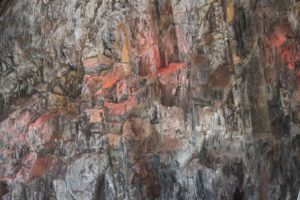You have no items in your cart. Want to get some nice things?
Go shopping
That last summer, when everyone is still alive, although now, come to think of it, “everyone” is sort of a strong word, we sit on the grass at a slant, slick with sweat, guarding the cake at our knees from a cavalcade of insects. We admire the buildings, as though we were getting away with something just by looking at them. A casually free pleasure amid a moat of things we cannot afford.
You’re saying how you read this article about Olmstead in The Atlantic, how he was this dilettante dropout who thought of parks as reinventions of nature. How he was, apparently, repulsed by the pre-park habit of hanging out in cemeteries, although, with no small degree of irony, the clearing of Seneca Village, itself to the inclusion of graveyards, means we are even now hanging out in a cemetery. You’re saying, as you glide a finger along the icing-thick edge of a chunk of cake, how ironic this is. How there are bodies in the earth.
We remember the spring when that storm tore through New Haven, ripping trees from the dirt. How that patch of green at Chapel and Temple, normally as nondescript as the surface of a pool table, undulated with punched-up soil and grass and there, at the center, was a centuries-old corpse ravelled in the gnarled damp roots of an oak. I’m not sure, actually, that it was an oak, but who cares, you’re saying, that was not the most interesting part of the story.
The outcropping where we sit is Fordham gneiss. Say it aloud, you say – and it is, we concur, wiping sweat from our hairlines (you had hair then), not gneiss at all, but rather bizarre that the rocks themselves, incalculably permanent, have been so permanently named after the men who scraped their inhabitants from the region. Wait though, you’re saying, scrolling through an article on your phone, I think we’re actually sitting on Hartland schist.
What’s the difference? I say.
The cake, by now, is nearly gone.
Across the street, of course, is our favorite place in the world. If you can get past the statue, aimed toward the park as though scouting for ne’er-do-wells, and beyond this a host of head-cockingly problematic interior displays as yet to be resolved by the curatorial committee, it is possible to think of history as a series of rooms, loaded with glittering things in low light, lush with story and outlandish guesses, a shrine to microcosms of grandeur.
On the second floor – or rather, the third, you’re saying now – there is my favorite place within my favorite place: the wall with the sea creatures splayed and spiked, animals one could not have known existed and which even now seem like the brainchildren of an FX department and not evolution. There is the impossibly large crab, wildly long-limbed, brittle and spindly, freckled with phantasmic deviations in color, nestled among its allies and enemies. Artfully arrayed octopi and crisply presentable molluscs, worms in vials, innumerable legs, spirals of tentacles, conjectural models on the verge of cryptozoology, minor crabs, tornado-redolent shells, the heroic symmetry of the lobster. They are all spectacular, all dead.
We do not name these creatures. They are not ours to name.
By 4:00, we have seen the writhing squid of the iconic lower-level diorama and are starving.
At the first-floor café – where we agree on the pretension of the accent mark above the e – the salads are prohibitively expensive, so we buy a slice of cake. We return to the park, and with your back, long and dark, arched over a curve of Manhattan schist, you marvel that all this was once underwater and will be again, that the near-future iteration of Inwood marble will contain the compact memory not only of our bones, but also our belt buckles and hair clips, teeth fillings and rings. The hinges that connect the fronts of our glasses to the sides.
Can you imagine, you’re saying, looking at the halo of buildings around the trees, if we could lie here and see the sun rise and set in an uninterrupted arc from east to west?
Were I to ask you now, you’d remember it fondly but as a mess – a palimpsest of nature and industry, communities expelled and reinvented – with the good-natured largess of an interloper. You’d remember how simple it was, to be both inside and outside of yourself at the same time, the sickly sweet taste of half-awareness that let you be poor and hot and uncomfortable and living the dream all at once.
We cannot comprehend all the things that will happen to us between now and the next time as we stand and wrap up the last of the cake, a treat for the long walk south and the longer train ride north, the backs of our knees etched with the imprint of grass.
A. J. Bermudez
A. J. BERMUDEZ is an award-winning writer and director based in Los Angeles, California. Her work has appeared or is forthcoming in McSweeney’s, Hobart, The Masters Review, Fiction International, Columbia Journal, Boulevard, and elsewhere. She is a recipient of the Diverse Voices Award, one of the ISA’s Top 25 Writers to Watch, and currently serves as Artistic Director of The American Playbook.
- Web |
- More Posts(1)




